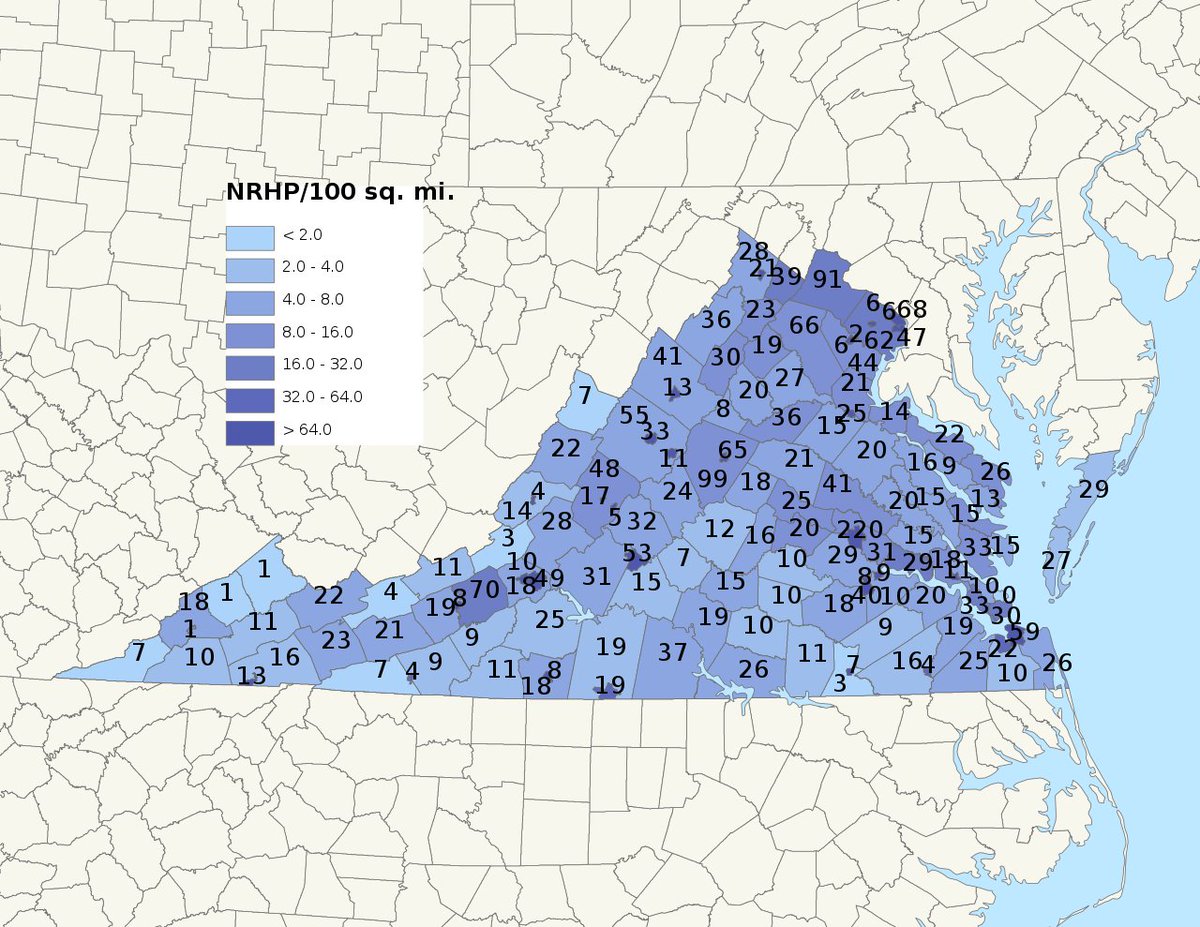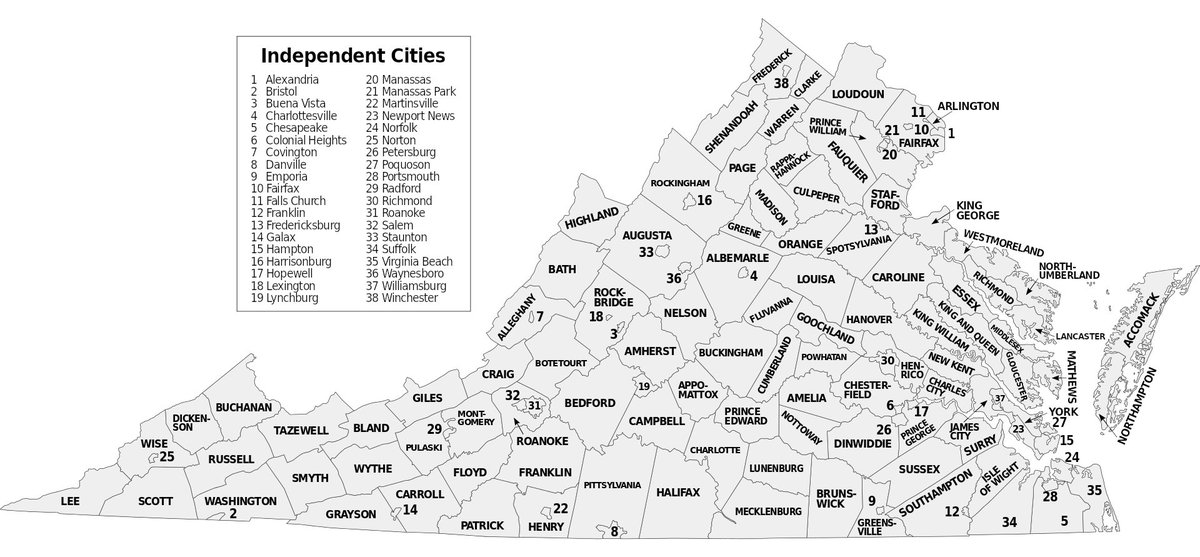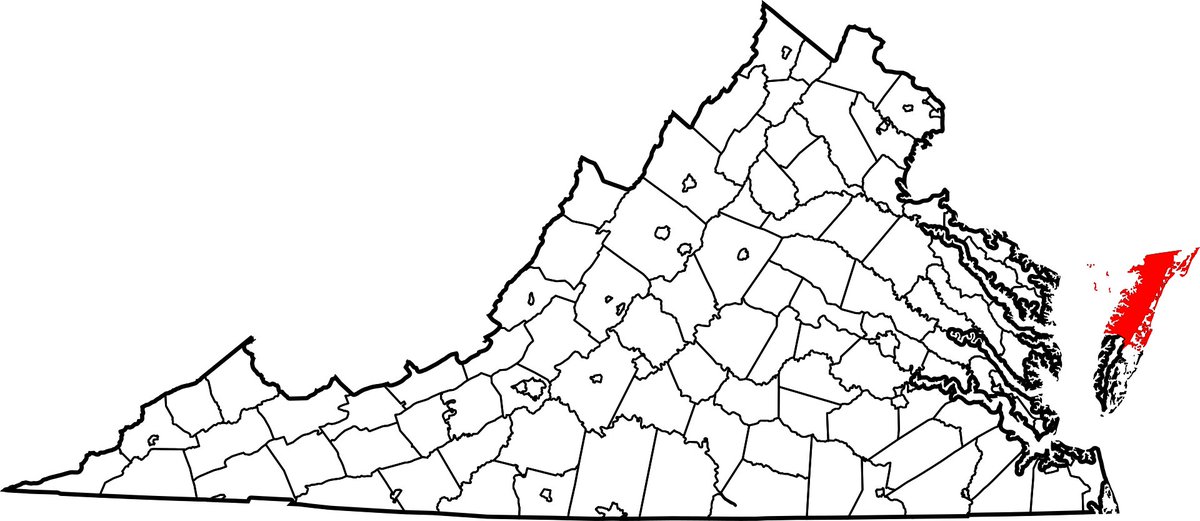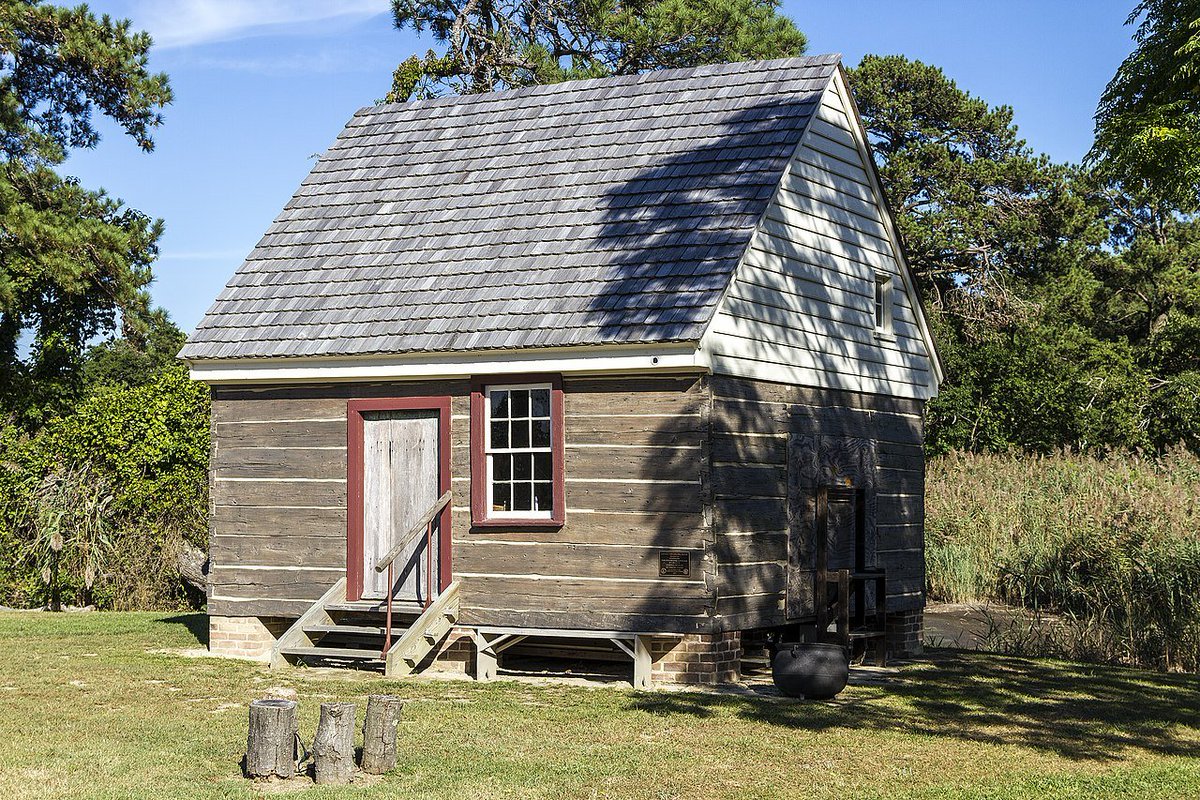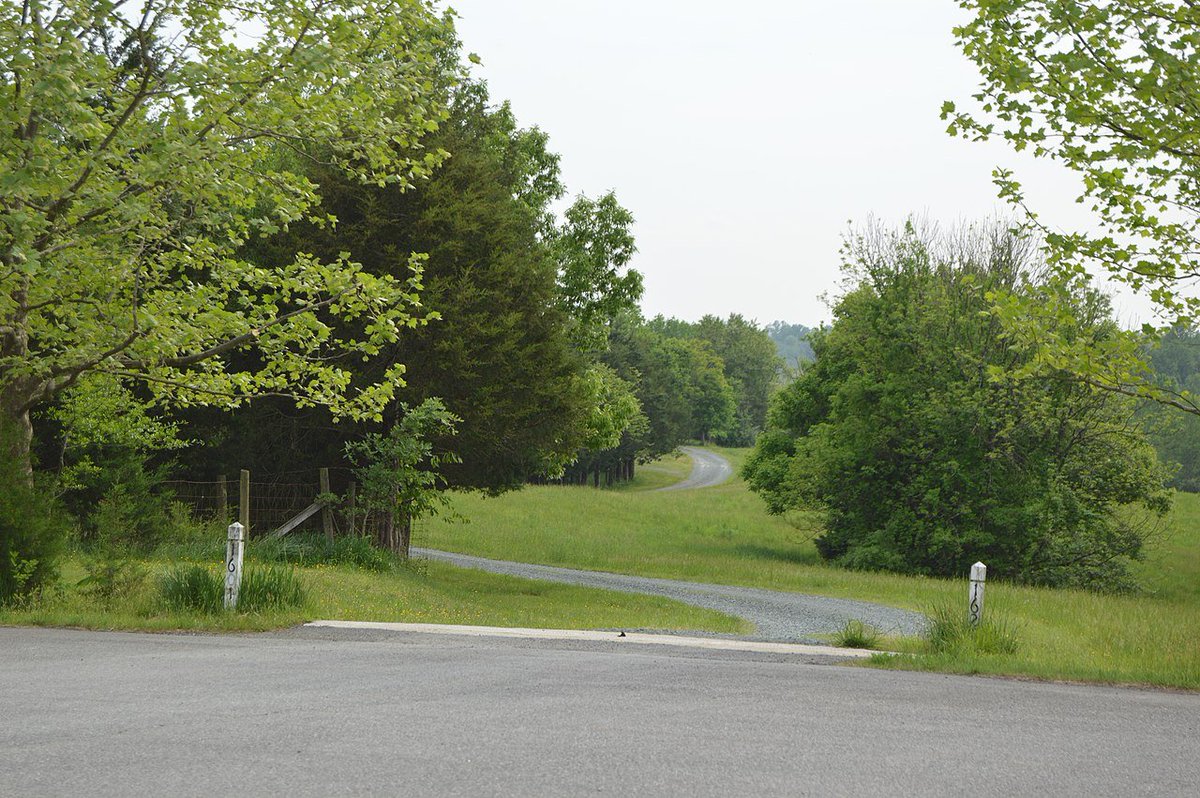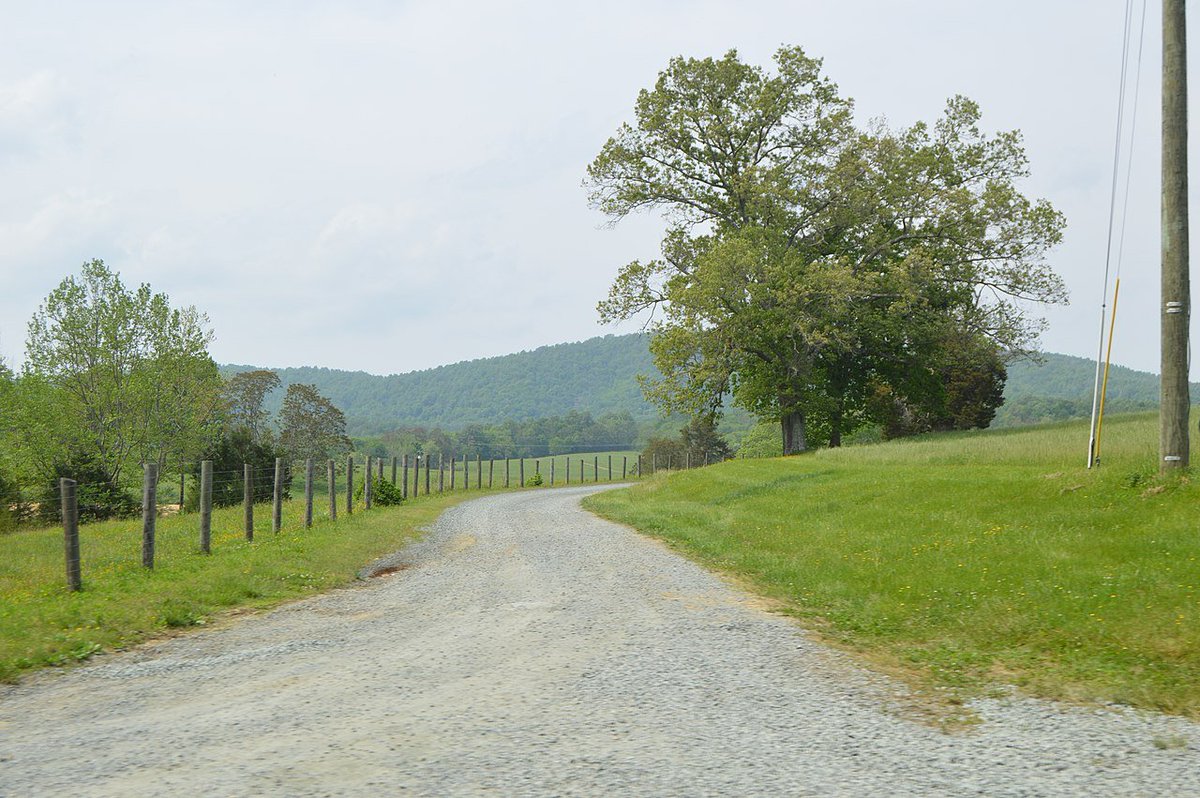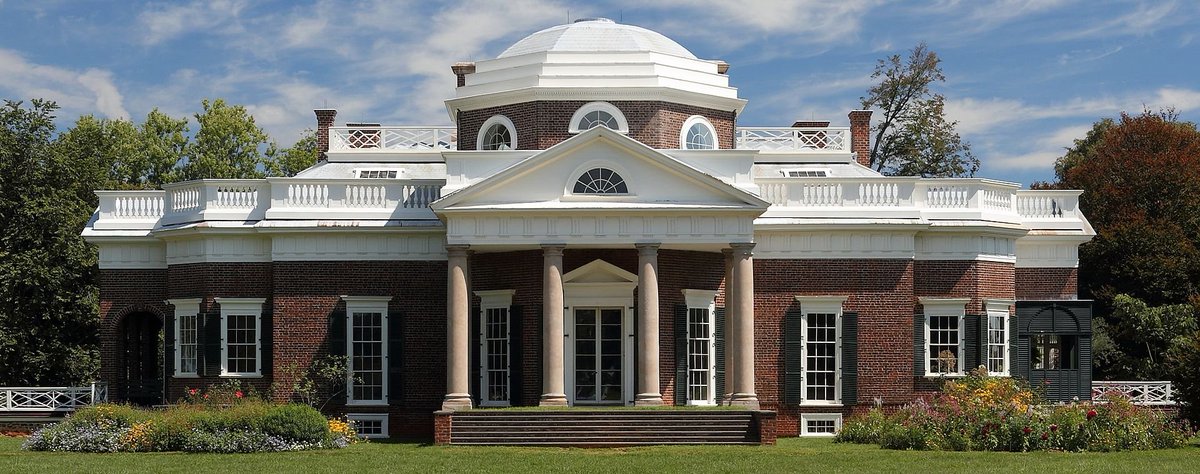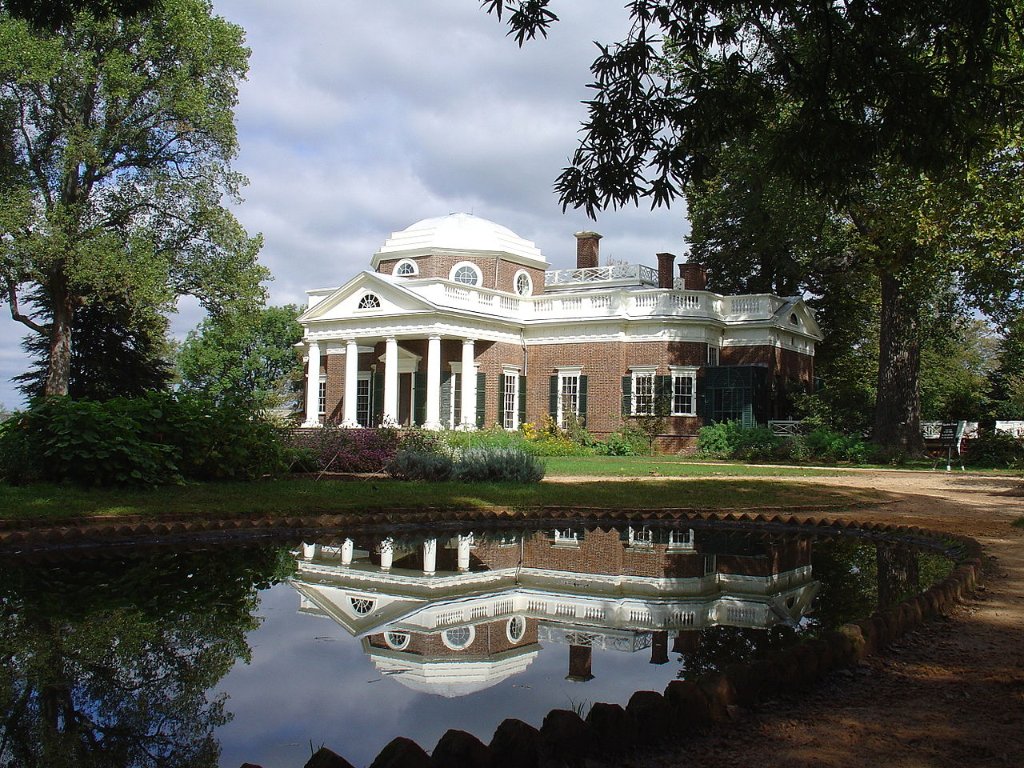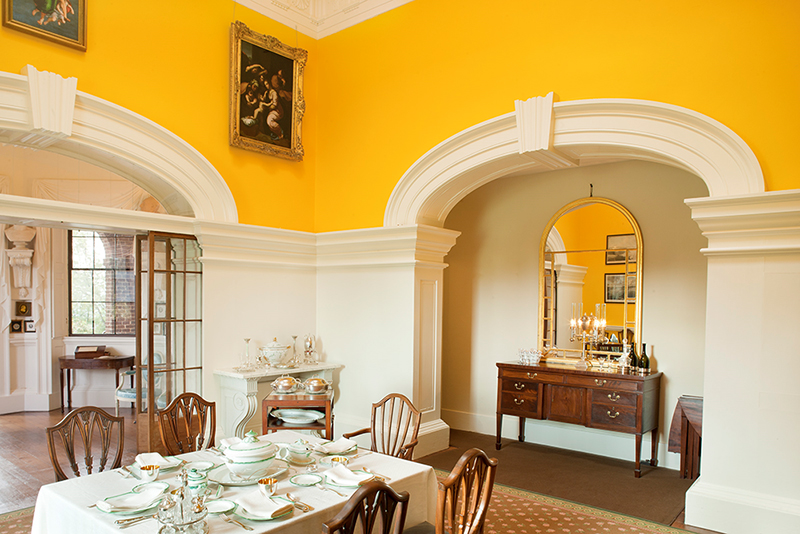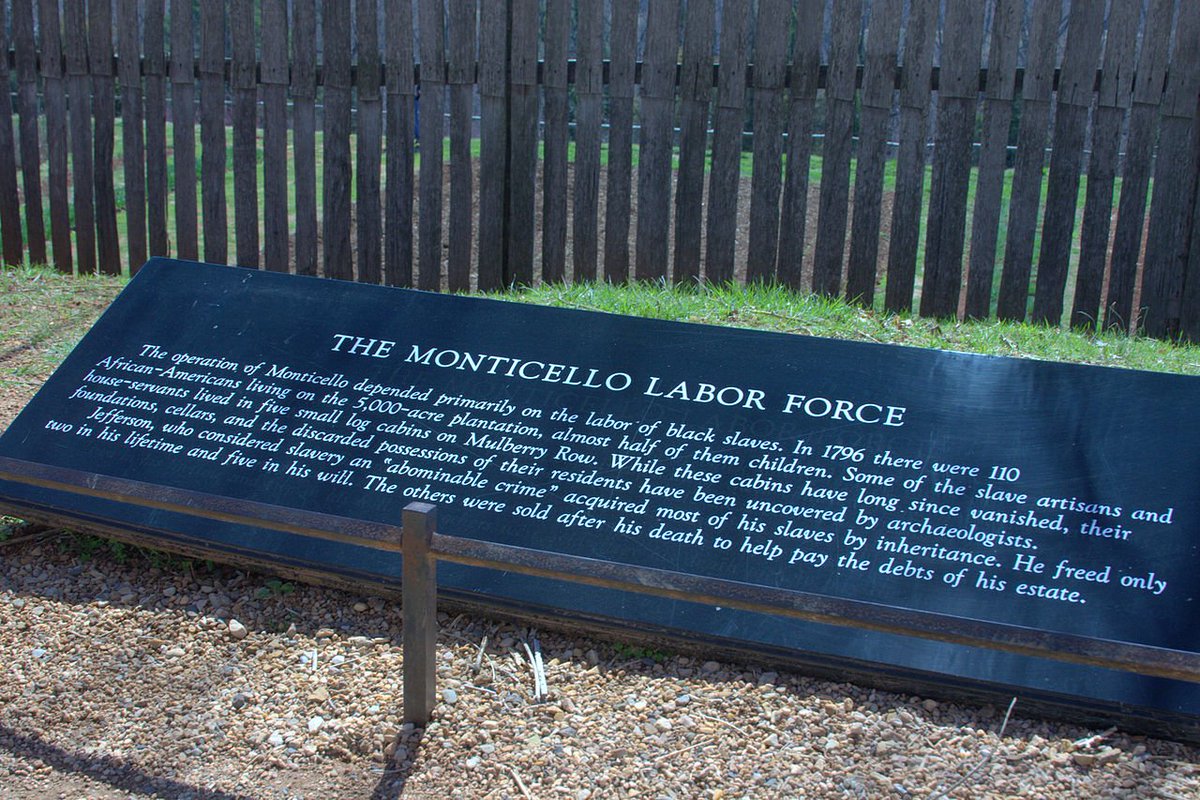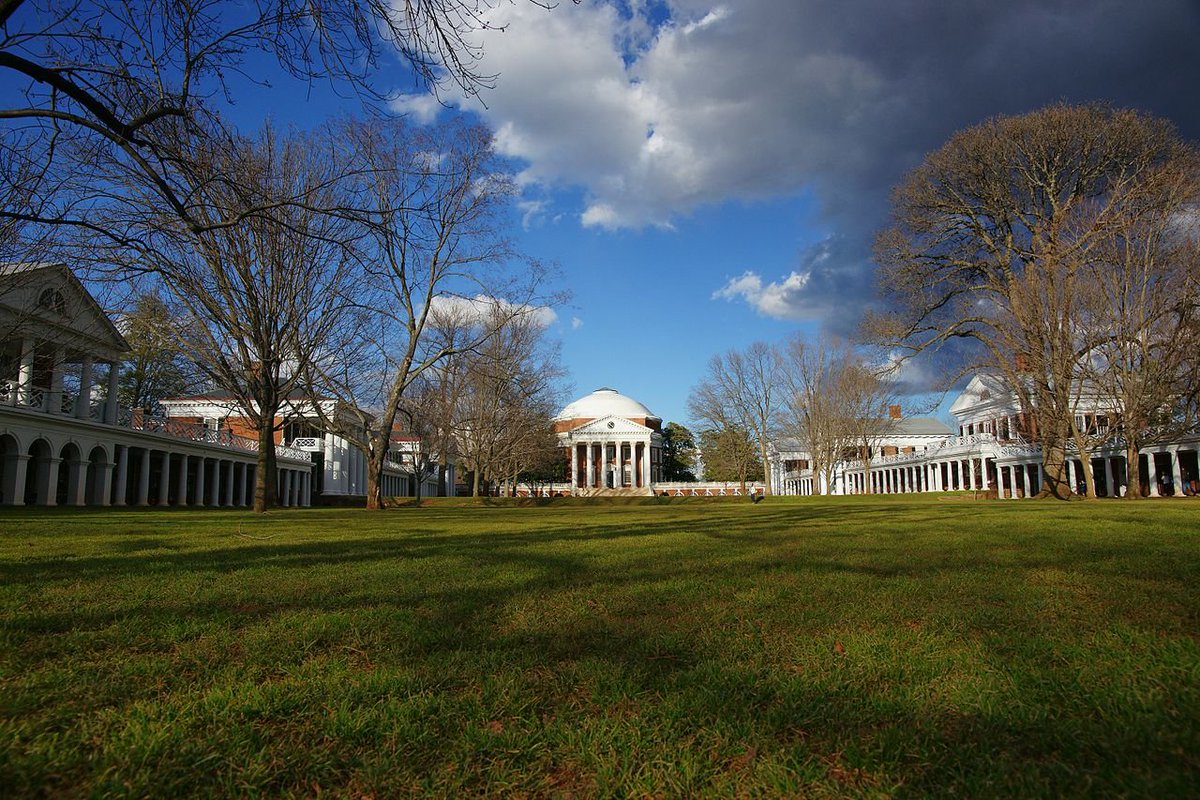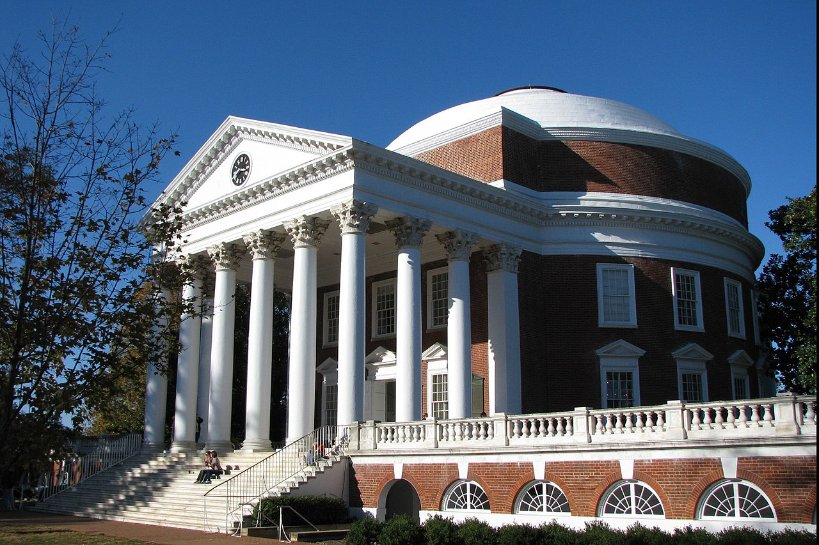Virginia! it& #39;s got loads of Historic Places: 3,027, the 7th most of any state. this figures: it was one of the most important parts of colonial America, the centre of a lot of Civil War action, etc etc. so this should be an interesting one...
it is also where we re-enter The South: this whole...thing...began with Arkansas but left the south proper after that, and now we are sloooowly beginning to close the circle. i am expecting a lot of listed Confederate monuments and suchlike depressing things
Virginia is organised weirdly, it has masses of "independent cities" that run themselves and aren& #39;t part of the surrounding county, but i& #39;m still just going alphabetical by city & county
purely by chance that starts us off conveniently where we left off in Maryland: out on the Delmarva peninsula in Accomack County, in the utterly bizarre disconnected little bit of the state
(that and the county below it constitute "East Virginia", as in the classic folksong Born In East Virginia) https://www.youtube.com/watch?v=el9qcfAEXHc&ab_channel=GaryLarson">https://www.youtube.com/watch...
the alphabet dumps us quickly into The Most Virginia Bit of Virginia: Albemarle County and its chief town, Charlottesville. this was where various politically engaged plantation owners lived at the time of the revolution, most notably Thomas Jefferson, who was also an architect.
ugh. i don& #39;t really want to get into all this because i just want to say "ugh" and move on but the whole Jefferson thing is so completely central to American architecture and its history and the way we think about it, so, ok. this is Monticello, Jefferson& #39;s self-designed home.
Monticello has a solid claim to being the most influential house in American history, and is almost certainly the most celebrated. it *is* an interesting house, filled with unexpected spaces and junctures between spaces, based around an octagonal dome.
it& #39;s filled with weird little moments and contrivances that feed the legend of Jefferson as this brilliant mind (he supposedly invented the wheelie chair, etc etc etc) who was enough of a polymath to be president and an architect and and and etc etc etc
but it is also - of course - a plantation, a slave estate. the slave buildings are all gone, not having been considered notable: in the last couple of decades they have begun to be properly archaeologically restored and commemorated.
although when i was there in 2012 there still wasn& #39;t a great deal of stuff there about the lives of the slaves - who after all formed a solid majority of the people who lived and worked there in Jefferson& #39;s time.
it& #39;s only in the last 20 years, for example, that the burial ground of the slaves there has been uncovered and commemorated. Monticello and its history and current presentation is now completely central to a whole new wave of debates about slavery and commemoration.
just up the road, meanwhile, is Jefferson& #39;s *other* big project - certainly what he considered his main legacy (more so than the presidency), the University of Virginia. he designed the core buildings: the big rotunda, the lawn, and the assortment of pavilions surrounding it.

 Read on Twitter
Read on Twitter
